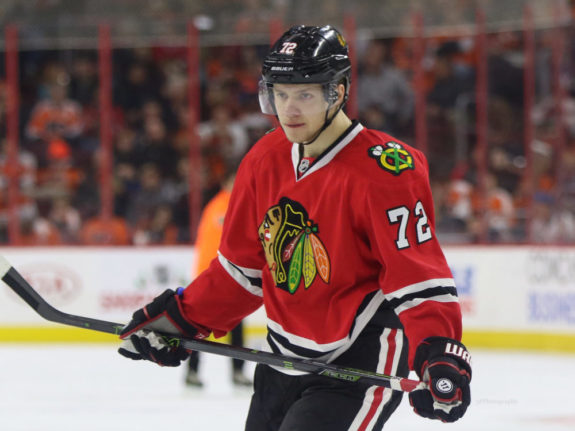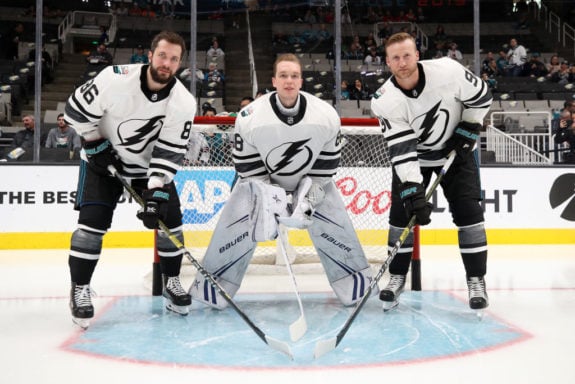On June 15, 2015, the Chicago Blackhawks defeated the Tampa Bay Lightning 2-0 to win their third Stanley Cup Championship in six years. Since then, the teams have had two very different levels of success. After two first-round losses in the next two seasons, the Blackhawks have not even come close to making the playoffs. The exception was the pandemic-inspired playoff tournament, but generally, Chicago has not been in the playoff conversation since their 2016-17 postseason exit. The Lightning, however, have gone on to appear in the last three Stanley Cup Finals, winning two of them.
The salary cap and aging star players have had a big impact on all NHL teams but seems to have hit the Blackhawks harder than most. Going into the 2022-23 season, the Blackhawks are among a small group of teams with the worst chance of winning the Stanley Cup, according to early betting odds. As the Lightning begin to face many of the same issues, management will need do a few things to prevent a similar fall.
Lightning Need Prudent Trading to Manage Cap Space
The NHL salary cap is supposed to be structured to keep overall costs down and maintain a competitive balance between clubs by limiting wealthier clubs from signing many more top players at exorbitant costs than their rivals, who may not have as much money in their coffers. However, the reality is that the cap has also prevented teams from keeping most of their core players, which will chip away at any success the team had in previous seasons.
Teams are often forced to trade players because they simply cannot keep them under contract and stay under the cap. While facing these issues, the Blackhawks made their first and, by some estimations, the worst trade of their post-Stanley Cup era. In June 2017, they traded left-winger Artemi Panarin, forward Tyler Motte, and a sixth-round pick in the 2017 NHL Draft to the Columbus Blue Jackets for forward Brandon Saad, goalie Anton Forsberg and a fifth-round pick in 2018.
Granted, it is easy to criticize trades in hindsight when they didn’t pan out the way one would have liked. However, in this case, the Hawks traded away one of the top young players to get Saad, who had two more years of controlled salary than Panarin. After a couple of seasons in Chicago, Saad was traded to the Colorado Avalanche for Nikita Zadorov, who eventually was moved to the Calgary Flames in exchange for a third-round pick. In the end, the Blackhawks have virtually nothing to show for this trade while initially letting go of one of the best young forwards in the NHL.

Conversely, the trades the Blackhawks did not make also hurt them. Many aging veterans, such as Duncan Keith and Brent Seabrook, were kept on the team partly due to their popularity with the Chicago fanbase. Eventually injuries and age limited their productivity, and the duo is no longer on the roster with little to show in return. While Seabrook is technically part of the Lightning roster, Keith just announced his retirement after spending last season with the Edmonton Oilers. What’s notable is that his retirement actually helps the Oilers’ salary cap but hurts the Blackhawks. They will now have to carry a dead cap hit of more than $5.5 million this season and nearly $2 million next season.
To date, the Lightning have avoided some of these pitfalls, partly by letting go of some of their more popular veterans. The most recent was defenseman Ryan McDonagh who was traded to the Nashville Predators in July, helping the team stay under the salary cap for the upcoming season. While not a popular decision, those they’ve made in recent years have allowed the organization to ice a roster that helped them reach the Stanley Cup Final in each of the last three years, winning the first two. Moving McDonagh will keep them under the cap while still having a team that is more than capable of reaching their fourth consecutive Final.
Goaltending Depth is Critical for Lightning’s Continued Success
The starting goaltender in the Lightning’s 2015 Stanley Cup appearance was the solid veteran Ben Bishop. One of the backups during Bishop’s tenure was a youngster named Andrei Vasilevskiy, who, of course, took over full-time in the 2017-18 season and became the backbone of the team’s success. Tampa Bay hoped this would be the case when they drafted him in the first round, 19th overall, at the 2012 NHL Entry Draft. While not an immediate concern, the team understands that down the road, they will need solid goaltending post-Vasilevskiy if they have any chance of further success.

(Photo by Bruce Bennett/Getty Images)
The Blackhawks were not so lucky. After concussions and aging, the team released their long-time goaltender Corey Crawford in 2020. He missed 80 games of the previous two seasons because of concussions, which ultimately led to his retirement after signing with the New Jersey Devils but not appearing in any contests. While he battled injury and after he was released, the Blackhawks have not had much success in the net. They have tried many combinations of youth and veterans but haven’t come close to the success they had with Crawford.
Lightning Need Continued Good Health & Some Luck
Successful teams also need a little bit of good luck, especially keeping key players healthy. Along with Crawford’s concussion issues, the Blackhawks also missed talented veteran Marian Hossa, who may have been the best free agent acquisition in team history. He scored 415 points (186 goals, 229 assists) in 534 regular-season games in helping the team win their three Stanley Cup titles. However, he hasn’t been able to play hockey since 2017 due to a progressive skin disorder, and he officially retired as a Blackhawk in April 2022. On the night of Hossa’s retirement, former teammate Patrick Kane said of the 2021 Hall of Fame inductee, “I don’t think it’s any coincidence that the team hasn’t done as well since he left.. he had that impact on the team.”
Related: Lightning & Penguins on Different Paths Since Consecutive Cups
The Lightning have been fortunate to avoid such issues. While the team has had to stretch without stars like Nikita Kucherov and Steven Stamkos, nothing has forced their top talents out of action. While there is no way to control injuries or Hossa’s rare circumstances, keeping key players healthy, with a little help from Lady Luck, is vital to a team’s success.
Seasonal ups and downs happen in the NHL, as they do in just about every other major sport, especially those with a salary cap. It is the hope that with good management and some luck, the pitfalls that happened to other teams can be avoided by the Lightning.